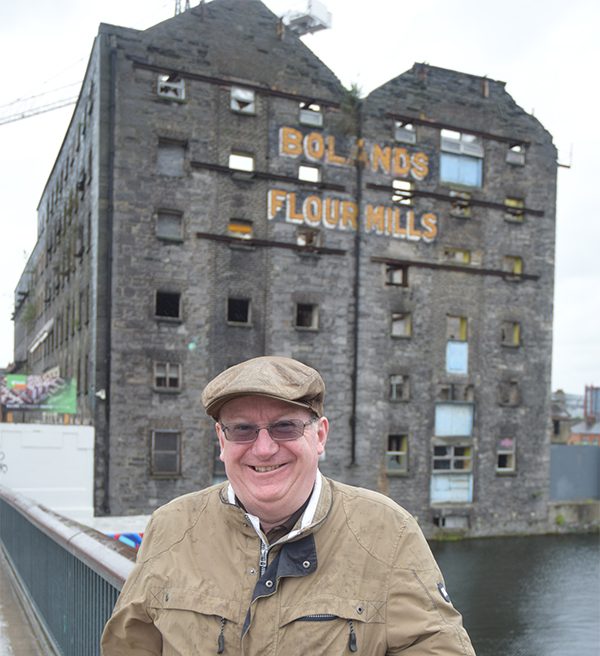
Joe Curtis, author, pictured by Bolands Mill.
Image: By Kevin O’Gorman
Joe Curtis, a retired surveyor, has written a number of books about local areas on the Southside, such as Dundrum and Blackrock.
His latest book is a historical book about Ringsend focusing on the history of industry and local activity in the area – what Curtis calls, “industrial archaeology.”
The book, Ringsend, contains a great many pictures as well as paintings showing various buildings and factories such as the Pigeon House Fort in the early 1890s or the Poolbeg Lighthouse in the 18th and 20th centuries. Curtis has been passionate about photography, both in his work and as a hobby.
Interestingly, the two iconic Poolbeg Chimneys were built separately. The first was built in 1971 and the second in 1978. The station was decommissioned in 2010, at which point it was ‘capped-off’ and made a protected structure by Dublin City Council, according to the author.
Talking to Curtis, it became clear that he was passionate about the older industries that Ringsend, and Ireland generally, had lost. He described how in the past, “useful work was needed, you worked for everything and if you needed something you went out and made it.” He contrasted this with today’s world where “everything’s on tap.”
Indeed, his book talks about Boland’s Mill on Ringsend Road and Barrow Street. Pims Flour Mill was taken over by Patrick Boland in 1873. An example of Curtis commitment to detail is clear here, when he explains: “The mill was built for Pims, utilising twenty-two pairs of grinding stones, and when Bolands acquired it in 1873, they added eighteen more pairs in a new extension.” The section of the mill at Ringsend Road is not the famous Mill where De Valera was stationed during the Easter Rising, which is often mixed up with Boland’s Bakery on Grand Canal St. However, rebels were stationed in both.
Ringsend has a large tradition of glass bottle making. According to Curtis it was the centre for Irish glass bottle production. Glass was produced in Fitzwilliam Quay, Charlotte Quay, Thorncastle Street and Cambridge Place. Unfortunately, as with many other industries in Ringsend, these have closed down.
Curtis’ book is well worth reading for anyone interested in the industries and activities of the local area and indeed in the photographic record of Ringsend. The book is available for purchase at Books on the Green, Sandymount and in all good bookstores.
by Kevin MacSharry



